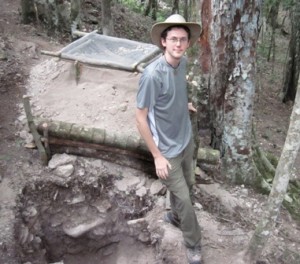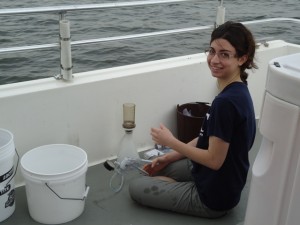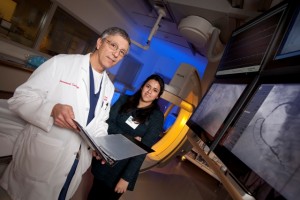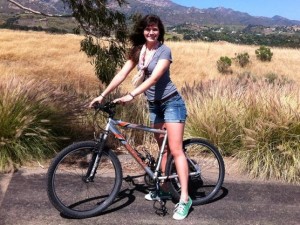
Jared Katz '12 in Guatemala
Since high school, Jared Katz ’12 (Stoneham, Mass.) has been interested in history and how past people lived day to day. Archaeology is the perfect fit, combining his enthusiasm for the past with the chance to travel and work on sites thousands of years old. Lafayette doesn’t offer a major in archaeology, but that wasn’t an obstacle for Katz, who designed his own major in it.
“Being able to form my own major is one of the things I love most about Lafayette. It has allowed me to study the subject I am most passionate about and shape my own course of study around that subject,” says Katz, who also is majoring in history. “Archaeology by nature is an interdisciplinary subject. It requires knowledge in anthropology and ethnography, art history, soil composition, and many other areas. Lafayette has the courses required to create the major.”
While the College offers degrees in 47 majors across four divisions, it also gives students the option to design their own major with faculty guidance. Students tailor a curriculum to fit their own academic interests and educational goals.
For example, Danielle Sobol ’12 (Wall, N.J.) designed her own major, the biological and artistic study of form and function in the human body, which has helped prepare her for medical school. Medicine, Sobol says, is as interdisciplinary as it gets.

Danielle Sobol ’12 takes water samples from Raritan Bay in New Jersey.
“I like how it’s more than just science,” she says. “It also incorporates a lot of humanities. As a doctor, you’re interacting with people every day, and you never know what’s going to come up. Surgery is where I see the biggest crossover with art. They’re both very intuition-based. You can’t just memorize a textbook and know how to do it. There’s a feel to it.”
Exhibiting artistic leanings since she was nine years old, Sobol focused her honors thesis on the liminality, or the in-between state, of fantasy realism. She also conducted research with Megan Rothenberger ’02, assistant professor of biology, on increasing plant biomass of Raritan Bay in New Jersey. In addition to gathering water samples, Rothenberger suggested Sobol create a pictorial guide of the most abundant phytoplankton species. Sobol’s paintings were so good that they now hang in Kunkel Hall, Lafayette’s biology building.
Like Sobol, Tania Torres ’12 (Sugar Land, Texas) plans to pursue a career in the medical field through a post-baccalaureate pre-med program, and she’s taking a humanities-based approach to get there. She developed her own major in classical studies to complement her major in philosophy.

Ronald Fields P’08 and Tania Torres ’11 at St. Mary Medical Center
“I want to gain a deeper understanding of the development of different civilizations and the ways that they think,” she says. “I have always been interested in the different ways that people perceive the world and situations.”
That understanding will help her with one of the most important parts of the medical field—interacting with patients. When she shadowed Ronald Fields P’08, a cardiologist at Comprehensive Cardiology and St. Mary Medical Center in Langhorne, Pa., for an externship last year, he emphasized the importance of the doctor-patient relationship.
Stretching boundaries is one of the key aspects of a self-designed major. Katz partnered with Katherine Metcalf ’12 (Springfield, Va.), who designed her own major in linguistics, for the Grand Challenges Scholars Program, in which students tackle one of the 14 Grand Challenges for Engineering in the 21st century identified by the National Academy of Engineering. What makes Lafayette’s approach unique is that the students take an interdisciplinary approach to solving their problems by combining engineering with the liberal arts.
Katz and Metcalf are attempting to improve natural language processing programs by looking for universal aspects of metaphor that can be coded to create more advanced programming. It’s allowed these two liberal arts-leaning students to influence computer programming in an exciting way.
Khadija Abdel Hafiz-Sokaria ’12 (Arlington, Va.), a double major in international affairs and the self-designed Arabic studies, stretched her boundaries quite literally by spending a semester at The American University in Cairo. There she took courses in elementary Arabic, Arabic literature, Islamic law reform, the social and political history of the Middle East, and the art and architecture of Cairo. After graduation, Abdel Hafiz-Sokaria wants to pursue graduate studies in international relations and Arab studies.
“Studying abroad in Egypt gave me a foundation for understanding and immersing myself in Arab culture and traditions,” she says. “Also, the experience helped me appreciate different peoples and the lifestyles that their cultures offer.”

Sarah Swienckowski-Eckhart ’13 in California
A self-designed major in the cultures of global ecology brought Sarah Swienckowski-Eckhart ’13 (Easton, Pa.) to Santa Barbara, Calif., where she interned for The Pacific Coast Business Times. She worked closely with a local group called the Green Coast Alliance while learning the ins and outs of the journalism world.
“Because I study the relationships between living things and the environment and take into consideration ways of communication and how to localize a sustainable solution to an area, working closely with this group allowed for me to see new ways of sustainable living,” she explains.
No matter where their interests lie, one thing is clear: Lafayette students know how to combine their ingenuity with the College’s vast resources to get the most out of their time on College Hill.




3 Comments
Yes, a self designed curriculum will help students explore their area of interest well. It will not only help them in getting a major of their own choice but also shape their dream career.
Wow, this is way cool. It’s never easy to just settle on one major so I love that all these students have used their degrees creatively.
Comments are closed.